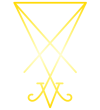
The knowledge presented on this page is advanced and intended for those who seek a deeper understanding of Baalzebul / Zeus. It also includes hieratic (deeply spiritual) knowledge, such as the
Divine Names of Beelzebul.
Regarding the Divine Names, these are divine names that are numerologically sound and appropriate for use in Summoning and Invocation practices.
Divine Names
- Baal-Zebul [Pronounced Va-AL-ZeBul]
- Baal-Zevulon [Pronounced Ba-AL-zevulON*
- Baal-Al-zevul [Pronounced Ba-Al – ALZEVUL]
*such as the word nebula/nebulon, but as ZEbulon
Divine Symbols
- Thunderbolt
- The Sieg Rune
- Bull's Head
- Oak Tree
- Thor's Hammer
- The Varja [Hindu]
- Mountains & Mountaintops
Divine Numbers and Attributes
- Numbers: 40, 50, 60*
- Runes: [In that order of importance]: Thurisaz, Tiwaz, Sowilo.
- Zodiac Sign of Power: Aries
- Divine Animal Symbol: Great Eagle, The Bull, Hawk, Serpent
Divine Forces
- Spark Of Life
- Union/Division
- Authority
- Kingship
- Rulership
- Protection
Important Titles
- Father of Gods And Men
- Creator Of Man
- The Mighty
- Heavenly Father
- Fashioner Of The Universe
- The Basileus [King]
- Slayer of Kronus
Other Names:
Beelzebub is also known as Baalzebub, Enlil, Bel, "Pir Bub"*, Baal Zebul, and Beelzebuth.
He is also known as the Goetic demon Bael, the ancient Greek God Zeus, the Norse God Thor, the Hindu deity Indra, and the Baltic God Perkūnas.
[*]There is no issue with casually referring to him as Beelzebub or Beelzebul in everyday speech, or even as Zeus. However, the hieratic names listed above offer a stronger spiritual resonance
and are more effective for works such as summoning and invocation.
[*]Beelzebul has been known by many names across various pagan pantheons, such as Perkūnas, Thor, and Zeus, all of which are closely connected in meaning and symbolism. These names are associated
with Law, Heavenly and Earthly Order, Leadership, and most notably, Thunder.
In India, Indra resides atop the sacred Mount Meru, much like Zeus on Mount
Olympus. He wields the holy thunderbolt Vajra, and his name is etymologically linked to rain.
Beyond his Eastern origins, Beelzebul was one of the most important Gods in the Greek pantheon under the name Zeus. This reverence was later reflected in the Roman pantheon, which, as is well
known, drew heavily from Greek cultural and religious traditions. Similarly, he was held in high regard in the Norse and Slavic pantheons.
The title "Bel" or "Baal", meaning King, was an ancient honorific denoting supernal power and spiritual dominion. Even today, in parts of the Middle East, the term retains this meaning. The
word "Baal" in ancient Greek is etymologically connected to "Basileus", which also means King. Accordingly, the image of Zeus as Basileus was commonly featured on items associated with
kingship: coins, shields, inscriptions, and more.
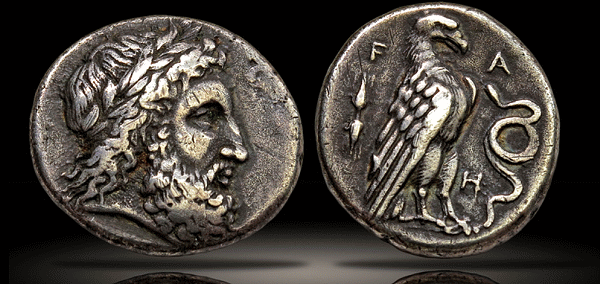
In contrast to modern interpretations of spiritual myths, Zeus was a most important God and symbolic of the Crown Chakra ["The Heavens"] at the top of the head. Enlil represents a
syncretic counterpart of the same divine archetype. For this very reason, the association of Beelzebul with the "Heavens," the "Bestowal of Rain," and the act of "Sending Thunderbolts upon His
Enemies" mirrors the qualities traditionally attributed to Zeus.
Zeus is also known as the Bestower of Rain, a symbol of divine energy flowing downward from the Crown Chakra. In spiritual practice, this can feel like being showered with rain. Thunder, on the
other hand, corresponds to the sensation of being "zapped" by bioelectric energy during meditation, often felt as a current of electricity throughout the body. The thunderbolt is a powerful
symbol and is connected to the rune of Thunder or Sowilo.
The modern titles ascribed to Beelzebul reflect a long-standing pattern of cultural and spiritual warfare, particularly from Abrahamic religions. Despite the slander and disinformation
surrounding his name, there remains an undeniable recognition, even within these distortions, of his grace, immense spiritual power, and supreme authority. Even the enemies of the ancient Gods
recognized this truth.
Beelzebul, once revered as "King of the Gods" in his identity as Zeus, was later slandered as "King of the Demons." However, in Greek, the word daemon originally meant “God,”
so the essence of his title remains unchanged. He is indeed King of the Demons, and this is echoed in many of the enemy's grimoires that describe him as commanding "unending ranks" under his
authority.1
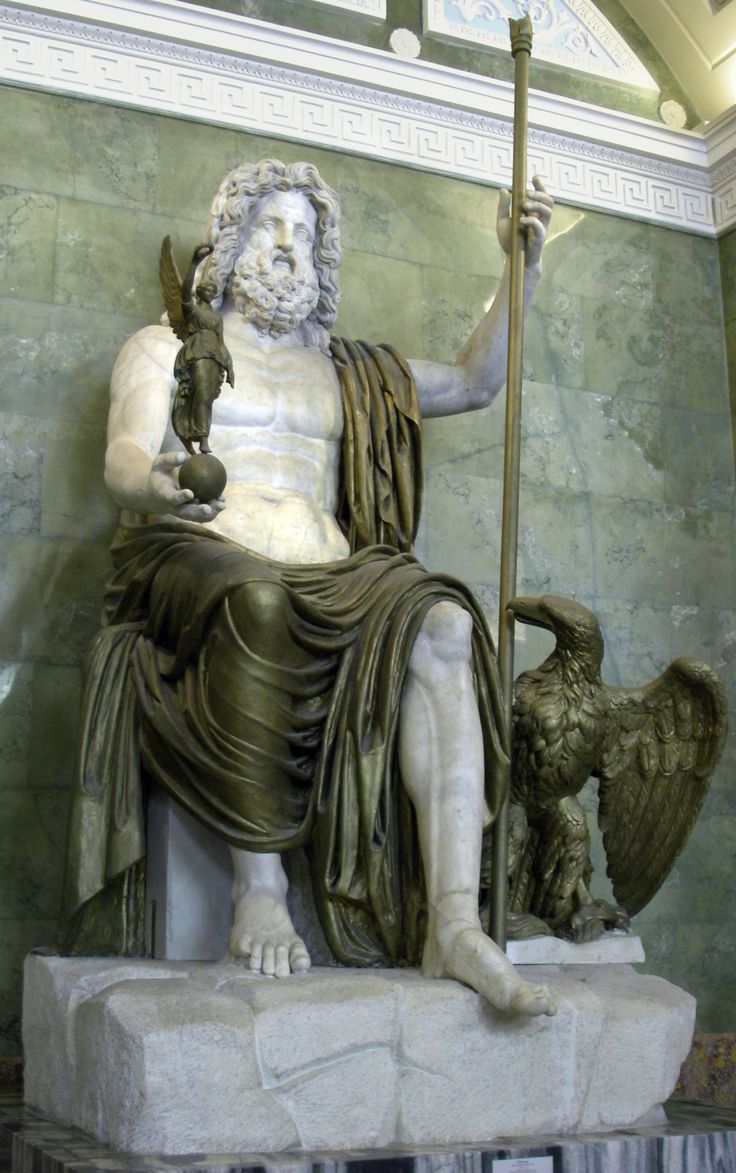
On a psychological level, Beelzebul/Zeus represents the pinnacle of masculine strength. He was said to have fathered Hercules and other great heroes of the ancient world. Ancient litanies
openly proclaimed him as the deciding force of the kosmos, meaning "all that is." Though considered the slowest to move into judgment, his wrath is the most destructive, while his blessings
are the most profound.
The Ancient Greeks often said, “Everything that happens, happens in the presence of Zeus.” This was especially spoken in reference to worldly rulers who exceeded their moral bounds or
acted as tyrants. Zeus can bring down tyrants, but also raise kings who are unshakable by negative forces.
His will governs both Gods and mortals. Beelzebul can initiate or end wars, enforcing divine justice as an unstoppable and universal force, symbolized also by the Hindu Vajra, a weapon
representing both thunder and indomitable power.
The power of Beelzebul was renowned throughout the ancient world, where he was universally recognized as the supreme God.
In Revelation 2:13, it is written: “This is the place where Satan’s throne is.” This refers to the ancient city of Pergamum in Asia Minor (modern-day Turkey).
The Pergamon Altar, a monumental structure once housed there, is a significant archaeological wonder. It
has been preserved and is now located in Berlin, as seen in the second photo.

As a symbol, Beelzebul represents the God of Paternal Order. Due to his supreme authority, he has been regarded as the leader of the Greek pantheon, and many others, symbolizing paternal,
firm, and justice-oriented rulership. While Satan governs the inner workings of pantheons and the esoteric Mysteries, Beelzebul has often assumed rulership over the visible and material
realm.
Zeus was often called “The Father of the Gods,” for he fathered many deities and was also associated with earthly heroes and demigods such as Hercules and Alexander the Great. In relation
to humanity, Zeus was also called “Decider of Fates” and “Father of Humans” for his significant role in the creation of humanity.2
The association of Beelzebul with the title "Lord of the Flies" is a blasphemous distortion created by his enemies. The origin of this slander stems from an epithet of Zeus, "Zeus Myiagros,"
meaning “Zeus who drives the flies (pestilences) away.” The Greek word for "flies" was mýai, but through intentional manipulation, a single letter was altered, degrading the meaning to
"Myaros", interpreted as “he of the flies” or “the defiled one.”3,4
This same method of corruption was employed by the Hebrews, who deliberately altered Beelzebul’s name to Beelzebub, a distortion previously explained in more detail on another page. This was a
common practice used to defame many Pagan Gods, perverting their names in Hebrew to blaspheme and diminish their stature. But the offenses did not stop at wordplay alone. His enemies engaged in
slander, defamation, and deliberate misrepresentation, attempting to portray him in the most profane and degraded manner possible.
Beelzebul is frequently mentioned in awe and fear by adversaries within the Bible, especially in the New Testament, where he is positioned as a direct opponent to the fabricated figure of
“Jesus.” Such was Beelzebul's power and influence, that when “Jesus” supposedly performed his so-called miracles of healing, people did not believe it was his doing, instead, they attributed it
to Beelzebub. Historically, Beelzebub was revered in the region as a healing God, known for performing miraculous acts of restoration and cure.
While the Bible and its narrative are fraudulent, these references reveal just how much the enemy recognized the immense spiritual rank, healing power, and dominion over demonic forces that
Beelzebul holds. Much like Satan, who mocks the pitiful Nazarene in the biblical texts, even the mere mention of Beelzebul’s name undermines and overshadows the fabricated myth of the
so-called Messiah. His mere presence shrinks the very relevance of the Nazarene, even within the enemy’s own corrupted writings.5
The attacks against Beelzebul have been systematic, carried out by both Hebrews and Abrahamic zealots, and continue even to this day. In 2015, these zealots, destroyers of human
history, infamously destroyed the Temple of Baal in Palmyra. The power of this God has been so
immense that every effort by the forces of decay has been aimed at erasing his legacy from human history. Yet, they have failed miserably.
The sheer magnitude of Beelzebul’s power is even acknowledged by his enemies. The Hebrews themselves openly admit that their attacks against Beelzebul have been deliberate and carried out by
them collectively as a people. Observe the language of spiritual warfare they employ:
"Powerful waves of spiritual warfare rose against Baal that would tear him down and turn him into an arch-demon, an antithesis to God. The attack on Baal came through the writings of the
Old Testament, primarily to discourage Hebrews from worshipping Baal and unifying them under the sole sovereignty of Yahweh. […] Baal was a specific name of a living God with
explicit powers. Like a universal God, Baal was much more complex than a mono-dimensional deity. […] By the time the New Testament was being written, Baal had been firmly associated
with dung, filth, and sexual perversities and was known as Beelzebub in Hebrew circles."6
It’s important to note that many Hebrews willingly betrayed their own so-called “national gods” and sought to infiltrate Pagan religious movements, even in ancient times. Unlike Pagans, who
rarely did such things unless forced under conditions of massacre or genocide, the Hebrews did so of their own accord, driven by weakness, opportunism, and a traitorous nature to their own
traditions.
Beelzebul possesses the power to drive away all forms of pestilence, whether they manifest as physical illness (through his healing abilities), social injustice (as a restorer of order), or
spiritual curses. In truth, the deeper meaning behind his association with flies, and the epithet “Myiagros”, relates not to decay but to spiritual resonance (the buzzing, hissing, and
vibrating sounds associated with chanting and vocal invocations), which cleanse the soul and dissolve spiritual afflictions, ultimately healing it.
Beyond the surface-level interpretations of entomancy, there is a deeper esoteric connotation regarding Zeus and his capacity to send "flies," symbolically referring to the sensation of
bioelectric energy or Vril. This energy often manifests as a tactile experience, resembling insects crawling on the skin, a sensation produced by the vibrational buzzing sounds of chanting and
vocal resonance, as previously explained. These phenomena are directly linked to the healing powers of Beelzebul, revered as the Healing God of Ekron, whose restorative abilities are
symbolized by the rising force of Vril.
Zeus, in the Greek Pantheon, symbolized the unrelenting, all-powerful force of necessity, a fate from which no being could escape. At the same time, Zeus was the one who fought against Kronus
(Saturn) and overcame him, establishing himself as King and thereby triumphing over the rigid limitations of human nature and karmic bondage.
Due to his associations with thunder and weather, as previously explained, Beelzebul has also been linked to the Norse God Thor, the wielder of thunder. The rune corresponding to Beelzebul's
power is Thurisaz (Thor’s Rune), relating to the force of the thunderbolt. Secondary runes associated with him are Sowilo and Tiwaz. The enduring significance of Beelzebul is even reflected in
modern language: “Thursday,” the Day of Thor. In his hidden kingship, Beelzebul is also associated with the Sun, often referred to as the Sun King. The Tiwaz rune further symbolizes the
enforcement of Satan’s divine decrees through the hand of Beelzebul, expressing his role in issuing divine justice.
The weapon of Zeus, the thunderbolt, known as "Keravnos", bears a linguistic connection to "Keruvim", a concept appropriated and distorted by Abrahamic traditions. The Hebrew word “Cherub”, used
to designate a being of the highest spiritual rank and power, ironically reveals the immense strength and spiritual authority attributed to Beelzebul in this context. In the Orphic Mysteries,
Zeus was revered for his dominion over thunder, which was believed to awaken the soul from its passive state of spiritual lethargy.
Beelzebul/Zeus was also known as the guardian demon of Alexander the Great, who conquered nearly the entire known world in his time. Alexander himself believed, and publicly declared, that he was
the son of Zeus Ammonas, related to the Egyptian God Amun (not to be confused with Amon-Ra or Marduk, who is a separate deity). Beelzebul is recognized as a bestower of victory, divine
protection, invincibility, and good fortune in times of crisis. When Alexander entered the Middle East, he was hailed as the son of Baal, while in Greece, he was revered as the son of Zeus
Ammonas. He was often referred to as “Basileus”, meaning King or Supreme Ruler, a title that corresponds directly with “Bael” in the East, both conveying the same meaning of sovereign
authority.
Below are depictions of Zeus Ammonas and the coins minted during Alexander the Great’s reign. The resemblance between the deity and the ruler is striking, particularly the horns, symbolizing
divine dominion and power. Alexander the Great was widely believed to be a descendant of Beelzebul/Zeus through his mother Olympias, who came from royal Ancient Greek lineage. During his
lifetime, he was widely accepted among Pagan civilizations as a physical incarnation of the divine power of Zeus. His mother, Olympias, was known to be a deeply spiritual woman and a
practitioner of occult rites and meditation.
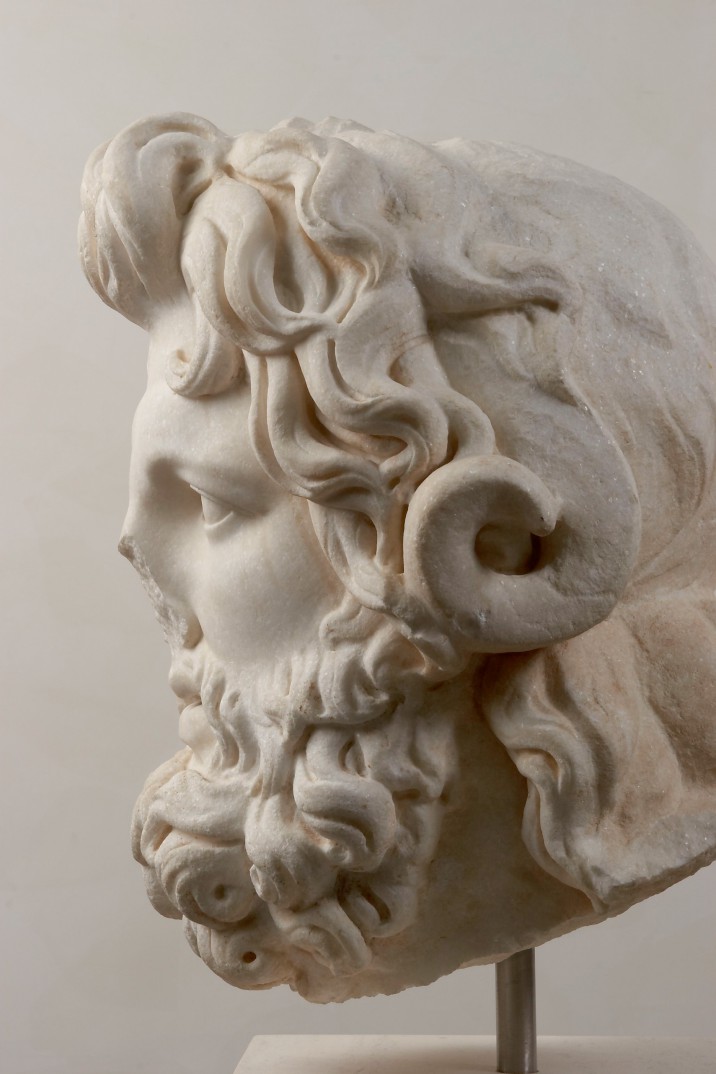
Lord Zeus/Enlil/Bael
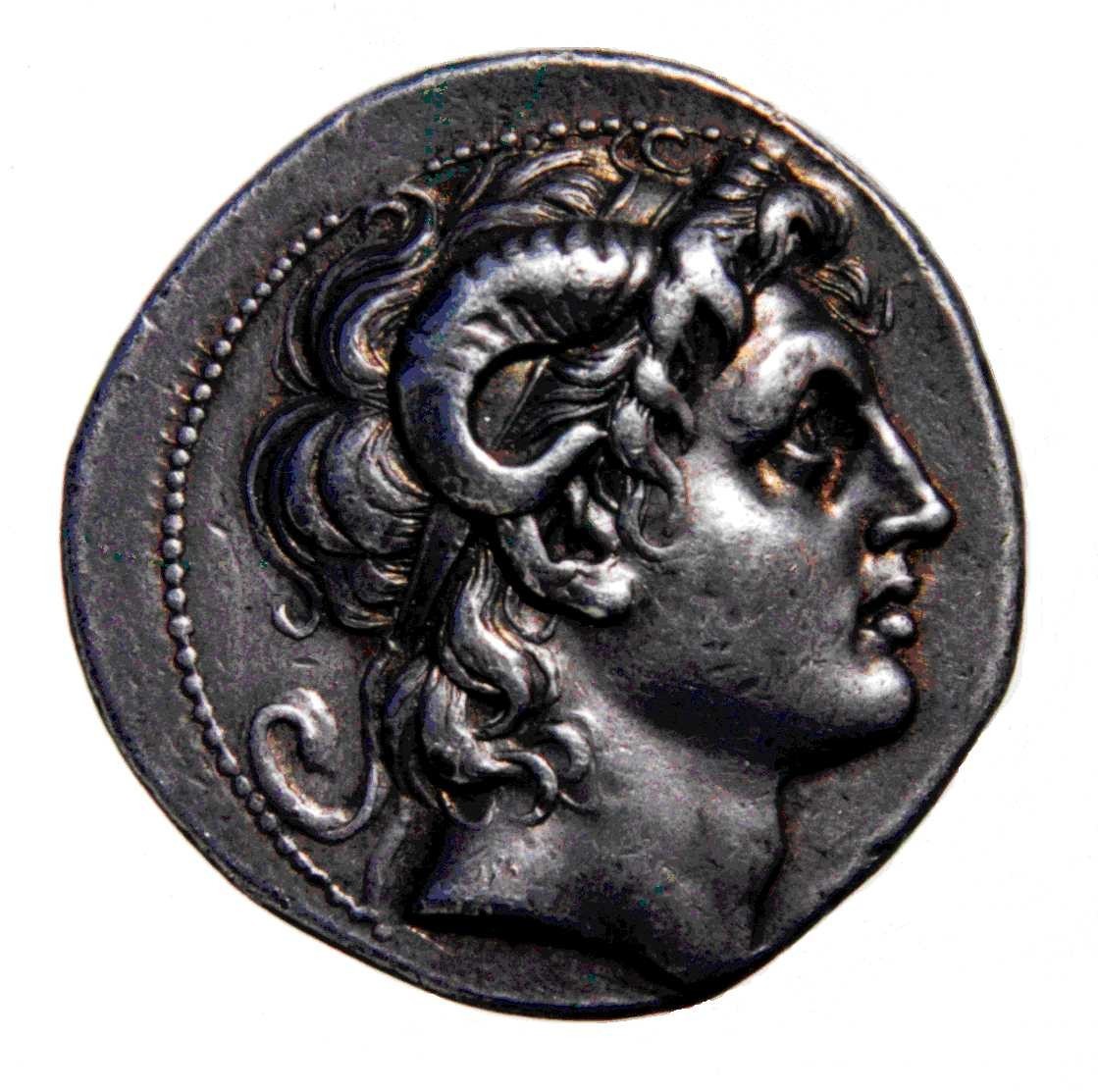
Alexander The Great, King of Macedon
The word "Amen," commonly used by Christians to conclude their prayers, is in fact stolen from the word “Amon”, an epithet of Zeus.
The mysterious death of Alexander the Great at the age of 33, with no precise details known, may not signify a physical death, but rather symbolize a spiritual transformation. It strongly
suggests the possibility that he completed the Magnum Opus at the 33rd year of his life, metaphorically marking the "end" of his mortal life. The popular stories of his death by poisoning and
intoxication lack supporting evidence. His mythical birth was steeped in powerful symbolism, most notably the claim that his mother was “impregnated by thunder,” reflecting his divine
origin.
Plutarch wrote that Alexander always respected other Pagan cultures, understanding that the same Gods appeared across all civilizations under different names and forms. Having been taught by
Aristotle, the leading intellectual authority in Greece at the time, Alexander was deeply educated in the spiritual arts, including alchemy and other esoteric disciplines.8,9,10
The symbolism of Zeus is deeply profound, filled with spiritual allegory and multi-layered esoteric wisdom. His name has clear linguistic and cultural connections to both Proto-European and Far
Eastern traditions. He is the original “Father of the Heavens” often alluded to even in Abrahamic traditions. Due to the vastness of his influence, he has often simply been called “God” or
“Father God.”
Zeus's power is commonly associated with the forces of causality, existence, life, and the element of aether, the primordial force of division, replication, and creation at the very core of the
universe. He is attributed with dozens of epithets, each reflecting a different aspect of his divine authority and completeness. These epithets demonstrate that Zeus governs all aspects of
reality, emphasizing his wholeness and perfection as a God.11
On the Falsehoods Attributed to Enlil Regarding the “Flood” that drowned humanity in the Sumerian Epics
Enlil never “drowned humanity”, as is falsely claimed. The so-called “Flood that drowned humanity”, a myth common across all Pagan cultures, holds deep spiritual significance. In both Sumerian
and Greek traditions, it is intimately associated with Enlil and Zeus, further revealing their connection to Beelzebul. Like the Garden of Eden, the Flood stands as one of the most profound
spiritual allegories in existence. While Satan is symbolically connected to the Garden of Eden myth (to be explored in depth elsewhere), Beelzebul holds the central role in the myth of the
Flood.
From this sacred myth, the story of Noah’s Ark was stolen and distorted by Hebrew religious narratives. Noah and his wife were directly copied from the earlier myth of Deucalion and his wife,
Pyrrha, whose name means “Fire”, who preserved humanity during the flood said to be caused by Zeus. As explained earlier, the “flood of water” refers to the Crown Chakra submerging the physical
body in spiritual energy.
The Myth of the Flood symbolizes the purification of the human being, the drowning of impure, base elements
within, and their replacement with divine spiritual energy and a higher, more noble nature. This transformative process is achieved through meditation and soul empowerment. The "Flood" is therefore not a literal event, but a spiritual allegory reflecting this inner evolution.
The twin forces of Ida and Pingala, representing the fire and water aspects of the Serpent energy, are essential to the soul's purification. The “Flood” represents the inundation of the soul by
the water element, a necessary stage that naturally occurs as one advances spiritually, submerging impurities. Pyrrha, as the symbol of sacred fire, represents the next stage: the purifying
flame that follows the cleansing flood, thus "saving humanity from the flood." Together, these forces are crucial components in the preparation for the Magnum Opus.
To the followers of Beelzebul: may you be crowned with the Crown of the Thundering Heavens!
HAIL BEELZEBUL!!!
— Page By High Priest Hooded Cobra 666
Sources/Bibliography
1 Dictionary of Ancient Greek, J. Stamatakos
2 Encyclopedia of Greek and Roman Mythology, Luke Roman and Monica Roman
3 In the general works of Pausanias, Zeus is referred to as the “Fly remover”, meaning he warded off pestilence and curses. More on this on: https://en.wikipedia.org/wiki/Myiagros
4 Ibid., 1, “Daimon” section
5 Hebrew Bible: Matthew 12:24, Mark 3:22, Luke 11:15 and so forth
6 “Beelzebub: An Unfairly Demonized Deity?", Huffington Post, https://www.huffpost.com/entry/beelzebub-an-unfairly-dem_b_9759936
7 Ibid 2, Entry for Zeus
8 Plutarch, Greek Lives
9 “Alexander the Great as a God”: https://www.ancient.eu/article/925/alexander-the-great-as-a-god/
10 Few surviving examples exist, most of the declared to be “fake”, as they were
confiscated by the Christian Church which rewrote history. An example of these texts is Secretum Secretorum
11 Wikipedia on Zeus's Name: "Name Section" and "Epithets"
12 Ibid 2, “Deucalion and Phyrra” section
* From Lord Beelzebul directly to High Priest Hooded Cobra

 አማርኛ
አማርኛ العربية
العربية বাংলা
বাংলা Български
Български 中文
中文 Čeština
Čeština Dansk
Dansk Deutsch
Deutsch Eesti
Eesti Ελληνικά
Ελληνικά Español
Español Français
Français हिन्दी
हिन्दी Hrvatski
Hrvatski IsiZulu
IsiZulu Italiano
Italiano 日本語
日本語 Kiswahili
Kiswahili Magyar
Magyar Македонски
Македонски नेपाली
नेपाली Nederlands
Nederlands فارسی
فارسی Polski
Polski Português
Português Română
Română Русский
Русский Slovenščina
Slovenščina Suomi
Suomi Svenska
Svenska Tagalog
Tagalog Türkçe
Türkçe





